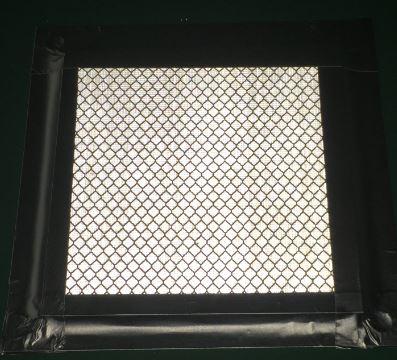Using analytical models to evaluate the reflection directional performance of the retro-reflective materials applied to building facades

Credit: COPYRIGHT (C) TOYOHASHI UNIVERSITY OF TECHNOLOGY. ALL RIGHTS RESERVED.
Overview:
A joint research team led by Asst. Prof. Jihui Yuan at the Dept. of Architecture and Civil Eng. of Toyohashi University of Technology, in collaboration with Osaka City University, has proposed two analytical models to evaluate the reflection directional characteristics of retro-reflective (RR) materials applied to building envelopes for urban heat island (UHI) mitigation, based on the measured data of optical experiments. It was shown that the predication result of the anisotropic body of rotation of the normal distribution function (AND) model is more accurate than that of the original analytical model.
Details:
Currently, countermeasures for UHI mitigation have been implemented widely. It has also been reported that the solar reflectivity of a building’s exterior wall surface and pavement is an important index to affect the air conditioning loads of buildings that are directly related to their energy use. Rooftops covered with diffuse highly reflective (DHR) materials (i.e., highly reflective paints) can reflect solar radiation to the sky if there are no higher buildings around it. However, if there are taller buildings nearby, much radiation can be reflected to neighboring buildings and roads. Consequently, this is absorbed by the neighboring buildings and roads, aggravating the UHI phenomenon. To solve this problem in applying DHR materials to building facades, RR materials have been recommended to replace DHR materials to mitigate the UHI phenomenon and reduce the energy consumption of buildings.
However, RR materials are still in the research stage and have not been used in practice. Before applying RR materials to a building envelope, predicting the reflection directional characteristics of RR materials has become one of the most urgent issues. Regarding prediction methods, the optical experiment has mainly been adopted to evaluate the reflection directional characteristics of RR materials; however, there is almost no accurate model prediction method.
Thus, a joint research team led by Asst. Prof. Jihui Yuan at the Dept. of Architecture and Civil Eng. of Toyohashi University of Technology, in collaboration with Osaka City University, has proposed two analytical models to possibly evaluate the reflection directional characteristics of three RR samples determined by their research team, comparing the prediction results of the two analytical models to that of the optical experiment in the research. The results of this research were published in the Elsevier journal “Energy & Buildings” on September 15, 2020.
This research mainly consists of three parts; the first is the production of RR samples, the second is the optical measurement of RR samples, and the third is the proposal of analytical models based on optical measurement data.
In this study, two analytical models are introduced to evaluate the reflection directional characteristics of RR materials. To propose an appropriate model to evaluate the reflection directional characteristics of RR materials, the angular distribution of reflection intensity evaluated by two analytical models for three types of RR plates are compared. It was shown that applying the AND model to evaluate the angular distribution of reflection intensity for RR materials achieved more favorable results compared to the original analytical model.
Future Outlook:
Future work should endeavor to improve the evaluation accuracy of analytical models, focusing on proposing other models to possibly evaluate the reflection directional characteristics of RR materials, such as using the artificial neural network (ANN) methodology. Moreover, to propose a three-dimensional model for evaluating the three-dimensional reflective directional performance of RR materials, forthcoming work will also aim to develop three-dimensional optical systems to continue this research.
###
Reference:
Jihui Yuan, Kazuo Emura, and Craig Farnham (2020). Analytical model to evaluate the reflective directional characteristics of retro-reflective materials. Energy and Buildings, Vol. 223, 110169, DOI: 10.1016/j.enbuild.2020.110169
Available at: https:/
This work has not received any research funding; however, it was supported by Osaka City University and the UNITIKA Corporation of Japan. The author is sincerely grateful to the UNITIKA Corporation of Japan for providing the glass beads used to create the RR samples, and Osaka City University for providing the optical apparatus.
Media Contact
Yuko Ito
[email protected]
Related Journal Article
http://dx.




